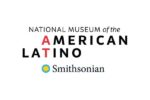Diversity, Equality, Cultural Competency
Traumatic events do not exist in a vacuum. Like other social phenomena, they should be understood within the social and cultural context in which they occur.
An article that examines how principals can put policies in place that honor the different cultures in schools.
El Día de los Muertos (Day of the Dead) is a day of celebration, particularly for the people in Mexico and Central America, and for many Mexican Americans in the United States. It is a day to honor and commemorate the lives of the dearly departed and to welcome the return of their spirits.
Learn all about this cultural holiday with free resources from the Smithsonian National Museum of the American Latino, including a Day of the Dead learning kit, virtual exhibitions, music, stories, videos, and more.
This Dia de los Muertos Lesson Plan was created by Vanderbilt University’s Center for Latin American Studies. This includes a comprehensive learning plan with art projects that students can create to supplement their learning. This lesson plan was originally written for 5th grade, but can be adapted for grades 3-12.
Content Learning Target: Students will be able to understand the cultural significance of Día de los Muertos traditions.
Language Learning Target: Students will be able to define Día de los Muertos and explain how the holiday honors the deceased.
“Separate but equal” laws segregated society and culture in the United States for the first half of the 20th century. After World War II, the tide began to turn and one place where Americans saw a change was in professional sports. In 1946, African American baseball player and military veteran Jackie Robinson became the first black man to play on a white team in a segregated league. With support from his wife and community, he broke that “color barrier” during spring training in Daytona Beach, Florida, at the City Island Ballpark.
Robinson earned the title Rookie of the Year in 1947, played in the World Series in 1955, and was a passionate Civil Rights activist when his athletic career ended. The “City Island Ballpark” is listed on the National Register of Historic Places for its association with him and renamed in his honor. This lesson explores Jackie Robinson’s life and the events of 1946, racism and “Jim Crow,” pop culture’s influence on a nation of laws, and the historic beachfront ballpark.
This lesson can be used in U.S. history, social studies, and other curricula that examine African American history and civil rights in the United States following World War II.
Resources for cultural diversity at work including articles, quizzes, and suggested readings.
Educating students to embrace diversity through these resources that will build on what they are already learning.
Educating students to embrace diversity through these resources that will build on what they are already learning.
BYU provides multicultural diversity activities as well as reasons for teachers to use them in their classrooms.
Dream Corps closes prison doors and opens doors of opportunity. They bring people together across racial, social, and partisan lines to create a future with freedom and dignity for all.
Professional development, research and resources for diversity, multiculturalism, and cultural competence.
Edutopia is a comprehensive website and online community that increases knowledge, sharing, and adoption of what works in K-12 education. They emphasize core strategies: project-based learning, comprehensive assessment, integrated studies, social and emotional learning, educational leadership and teacher development, and technology integration.









